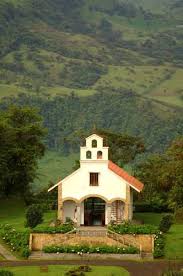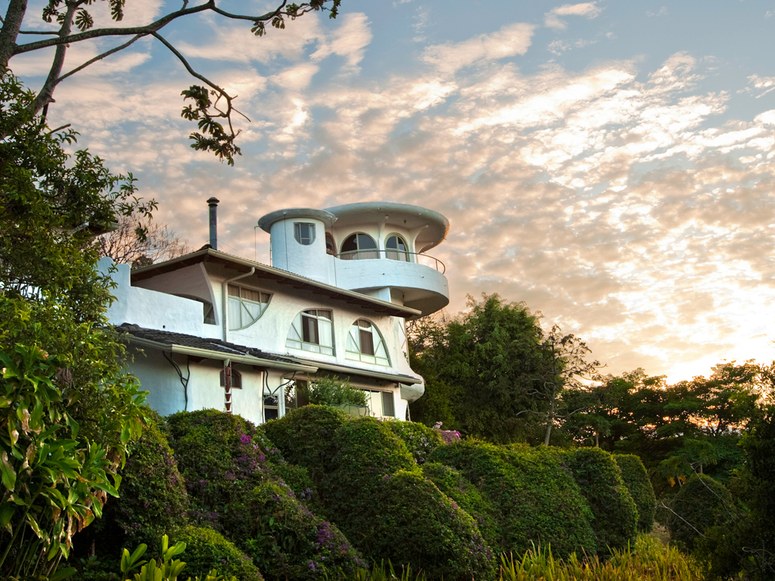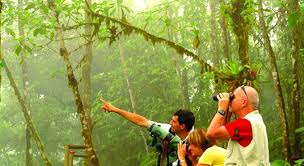Costa Rica Travel – You could spend an entire vacation in Costa Rica soaking in the sun on a beautiful beach, but most come here to explore the vast areas of untouched wilderness that make this tiny Central American country one of the most biodiverse in the world.
 Costa Rica has transformed itself into a premiere eco-destination by setting aside almost one-quarter of its land as nature reserve, allowing visitors to enjoy animals in their natural setting. And to make sure that these areas are available for future generations, Costa Rica has pioneered sustainable tourism practices that leave minimal impact on its ecosystems.
Costa Rica has transformed itself into a premiere eco-destination by setting aside almost one-quarter of its land as nature reserve, allowing visitors to enjoy animals in their natural setting. And to make sure that these areas are available for future generations, Costa Rica has pioneered sustainable tourism practices that leave minimal impact on its ecosystems.
“We are a very green-oriented country and if we start compromising the goose that laid the golden egg, then we don’t have a lot to fall back on. Costa Rica, unlike Peru or Guatemala, doesn’t have a great history of Indian empires, but we do have a great history of democracy and sustainable practices,” says Jim Damalas, president and CEO of Greentique Hotels, a company that operates four Costa Rican eco-hotels. The hotels adhere to the country’s Certification for Sustainable Tourism program, which recognizes businesses that follow sustainable practices.
Those practices include things like generating electricity from renewable sources, recycling waste water, using local food ingredients to minimize transportation and a myriad of other small efforts that make for a minimal impact when tourists come to experience the natural beauty of the country.]
That natural beauty is best symbolized by its national parks, like the easily accessible Manuel Antonio on the Pacific coast, where visitors hike wide paths to observe birds, monkeys, sloths, butterflies and the many other creatures that abound in its rain forests.
In the country’s other national parks, visitors can explore diverse ecosystems such as volcanoes, cloud forests, mangroves and coral reefs and more. Some explore on foot, others on horseback and some places are only accessible by boat.
Because of its natural heritage, the bulk of Costa Rica’s tourist attractions and activities are centered around nature and there is something for all tastes, whether it be an avid birdwatcher or a family with a finicky toddler.
It’s also why many of its hotels are geared toward nature lovers. Some even boast their own private plots of land, meaning guests don’t have to travel far to experience Costa Rica’s biodiversity.
Here is a sampling of some of Costa Rica’s top spots to see and stay.
Villa Blanca Cloud Forest Hotel and Nature Reserve
Once the mountain getaway of a former Costa Rican president, Villa Blanca Hotel is now a resort of 20,000 acres in the Los Angeles Cloud Forest that has been set aside as a private natural reserve. Cloud forests are unique in that they get most of their moisture from persistent cloud cover instead of rain. Only one per cent of the world’s woodlands is cloud forest.
Guests of Villa Blanca can explore the mossy, verdant forest with local guides, who will help them spot exotic animals such as coatis, boa constrictors and hummingbirds. Because the property is surrounded by forest, it’s not unusual to see some of these creatures roaming the grounds of the hotel.
Guests stay in delightful casitas that reflect the hacienda heritage of the property, with each house featuring its own fireplace to ward off the damp chill on cloudy days and a terrace for days when the sun is shining.
Finca Rosa Blanca Coffee Plantation Resort
When it comes to sustainable hotels, Finca Rosa Blanca is in a class of its own.
It was the first hotel in Costa Rica to be certified sustainable and the only one in the country to achieve a perfect score of 100 per cent, but what visitors really come for is the serene setting that lets them disconnect from busy lives.
Only 15 minutes from San José’s international airport, Finca Rosa Blanca is set in a lush, tropical garden that features villas and guest houses with styles inspired by architect Antoni Gaudí and the American Southwest.
The cornerstone of the resort is its coffee plantation. It’s certified organic and open to visitors who want to learn how coffee is harvested and processed to become the hot brown elixir that we crave each morning.
Si Como No Resort and Wildlife Refuge
For most people, the only toucan they will ever see is on a Fruit Loops cereal box. At Si Como No, you just might see one of these tropical birds in a nearby tree as you sit at the hotel restaurant, which overlooks the forest as it slopes out to the nearby Pacific Ocean.
Situated in the seaside town of Quepos on the Pacific coast, Si Como No is close to Manuel Antonio National Park. If you can’t get enough wildlife-watching at the park, Si Como No has its own private nature reserve and butterfly garden that is part of a green corridor connecting to Manuel Antonio. On some days, you might even see more animals there than at the park.
By MARK STACHIEW, Ottowa Citizen

